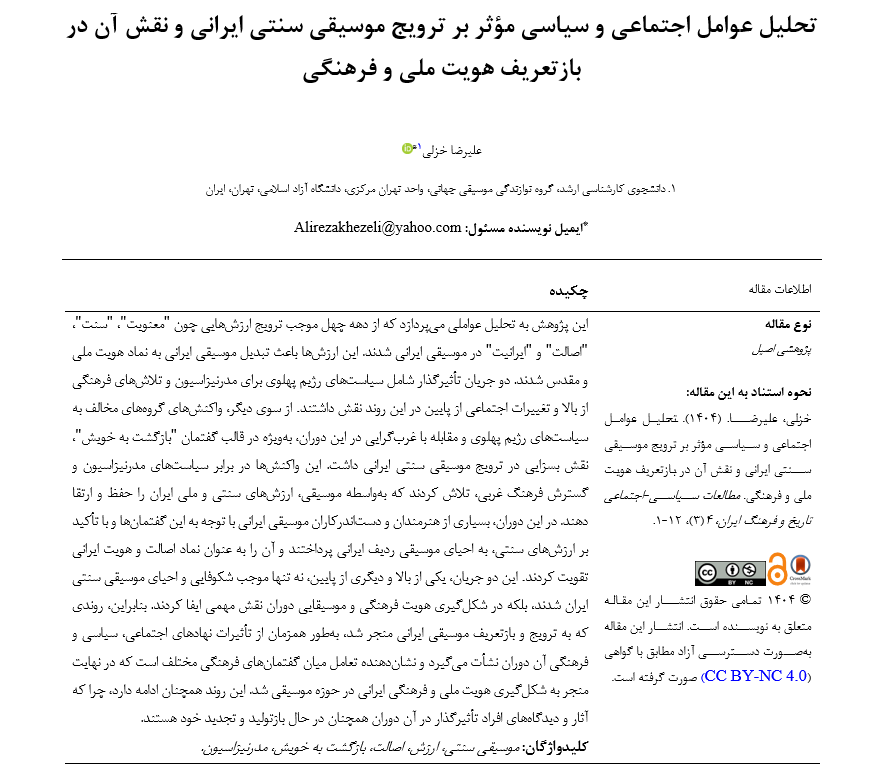Analysis of Social and Political Factors Influencing the Promotion of Iranian Traditional Music and Its Role in Redefining National and Cultural Identity
Keywords:
Traditional music, value, authenticity, return to oneself, modernizationAbstract
This study analyzes the factors that, since the 1960s, contributed to the promotion of values such as "spirituality," "tradition," "authenticity," and "Iranian identity" in Iranian music. These values transformed Iranian music into a symbol of national and sacred identity. Two influential currents played a role in this process: the Pahlavi regime's modernization policies and top-down cultural efforts, as well as bottom-up social changes. On the other hand, the reactions of opposition groups to the Pahlavi regime's policies and the resistance to Westernization during this period—particularly in the discourse of "return to the self"—had a significant role in promoting Iranian traditional music. These reactions, in response to modernization policies and the expansion of Western culture, aimed to preserve and elevate Iran’s traditional and national values through music. During this time, many artists and music practitioners, in alignment with these discourses and emphasizing traditional values, focused on reviving Iranian radif music and reinforcing it as a symbol of authenticity and Iranian identity. These two movements, one from above and the other from below, not only led to the flourishing and revival of traditional Iranian music but also played a crucial role in shaping the cultural and musical identity of the era. Therefore, the process that led to the promotion and redefinition of Iranian music simultaneously stems from the influences of the era's social, political, and cultural institutions and reflects the interaction among various cultural discourses, ultimately contributing to the formation of a national and cultural identity in the realm of music. This process remains ongoing, as the works and perspectives of influential figures from that period continue to be reproduced and renewed.
Downloads
References
Boroujerdi, M. (1996). Iraman Intelectuals and the West: The Tormented Triumph of Nativism. Syracuse: Syracuse University Press.
Danilo, A. (2004). Reports of speeches. Mahoor Quarterly, 25, 169-174.
Gorgin, I. (1971). Rethinking the Art Festival: The Fifth Shiraz Art Festival. Public Relations Organization of the Art Festival Persepolis.
Mosayebzadeh, A. (2003). A look at the history of the Center for Preservation and Dissemination of Iranian Music. Mahoor Quarterly, 20, 17-96.
Said, E. W. (1978). Orientalism. New York: Pantheon.
Saigon, A. (2004). A reflection on the report. Mahoor Quarterly, 25, 175-178.
Shamloo, A. (2010). An article by Ahmad Shamloo coinciding with Stockhausen's presence in Iran. Cultural and Music Monthly, 29, 18-20.

Downloads
Published
Submitted
Revised
Accepted
Issue
Section
License
Copyright (c) 2025 Alireza Khazali (Corresponding Author)

This work is licensed under a Creative Commons Attribution-NonCommercial 4.0 International License.







